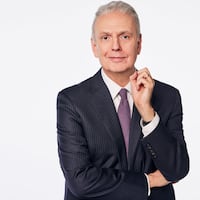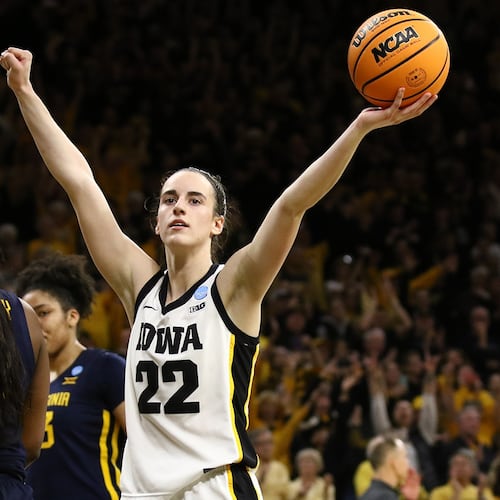In the early days of the Great Reset, John Hart would say of the strategy of stockpiling pitchers, “It takes 10 to get one.” There was a time when the Two Johns — Hart and Coppolella, gone since autumn 2017 — fully believed Kolby Allard might be the “one.” Turned out he was among the other nine.
We can’t really say Allard succeeded here. The first drafted arm of the Braves’ rebuild is gone before his 22nd birthday. But the Allard example proves, albeit in a backhanded way, why the volume approach regarding pitching was the only way to go. It also proves that pitchers who don’t pass muster can still hold value.
The Braves, who needed relievers, traded Allard to Texas for Chris Martin, not to be confused with the Chris Martin of Coldplay who was once Mr. Gwyneth Paltrow. If you haven't heard of the non-singing Chris Martin, there's a reason. He's 33. He has been a professional pitcher since 2010. He has worked in 124 big-league games. He was drafted twice — in 2004 by Detroit and in 2005 by Colorado — but he hurt his shoulder and wound up working in a warehouse for three years. His first pro pitch was for the independent Grand Prairie AirHogs.
He has since been everywhere, Japan included. He spent 2016 and 2017 with the Nippon Ham Fighters. He signed with the Rangers — he grew up in their neighborhood — and started last season in Double-A. He wound up making 46 big-league appearances in 2018, and this year he has been ridiculously good. In 38 innings, he has 43 strikeouts against four walks. (Braves relievers have walked 191, tied with Pittsburgh for the MLB worst.)
Remember the wayfaring saga of Evan Gattis? That's pretty much Martin. He loaded UPS trucks at DFW Airport and moved refrigerators for Lowe's. He was playing catch with a warehouse co-worker when he noticed that, hey, his shoulder didn't hurt anymore. His Wikipedia page is full of fun stuff, and now he gets to have fun pitching in a pennant drive and surely the playoffs. He might not be cut from classic closer cloth — he has five career saves, four this season — but among this relief corps, who is?
Three years ago, Martin was working in Japan, and Allard was the No. 1 starter on the Low-A Rome team that then-Braves general manager John Coppolella called “our flagship.” (Other members of that title-winning team: Mike Soroka, Touki Toussaint, Max Fried, Ronald Acuna and Austin Riley.) Back then, the Braves wouldn’t have traded Allard for anyone short of Mike Trout; on Tuesday they dispatched him even-up for a journeyman reliever, and they had to feel lucky to get that much.
That’s how far Allard’s stock had slipped. He was ranked their 10th-best prospect, mostly on the strength of what he did at Rome and Double-A Mississippi. He began last season at Gwinnett and was promoted to the majors in July. He made three big-league appearances, one of them a start, and the more you saw — we stipulate that three big-league games don’t constitute a massive sample size — the more you wondered, “What’s the fuss?” With Soroka and Toussaint and even Luiz Gohara, you’d take a look and think, “There’s something there.” With Allard, you weren’t sure how he’d get big-league hitters out.
It was significant that, with the all the issues regarding pitching this season, Allard never budged from Gwinnett. Soroka and Fried claimed and held rotation spots. Bryse Wilson — drafted in Round 4 a year after Allard went No. 14 overall — started the season’s second game. Allard stayed in Triple-A, where he managed a 4.17 ERA and struck out eight batters per nine innings. (In Single-A in 2016, he struck out 9.8 per nine.)
He went from being an almost-certain chunk of the Braves' future to what Hart described as "currency." The Braves, under new management, had all but decided Allard wouldn't help them as a pitcher. His greatest value became what he could fetch in trade. (In an extended conversation earlier this month, GM Alex Anthopoulos dropped Allard's name as a candidate for the big-league rotation, though there was never a sense he was close to promotion.)
It didn’t help that Allard was always linked with Soroka, drafted 14 spots after him. The two moved in lockstep in the minors for a couple of years, and then Soroka separated himself from Allard — and, to be fair, every other young pitcher in the chain. What hurt more was that Allard hit a wall. The stuff that looked great from an 18-year-old was pretty much the same at 20, which meant it no longer looked so great. In his defense, he’s 21 and a lefty, and the ancient baseball belief is that left-handers take longer.
For the Rangers, a sub-.500 club with a substandard farm system, Allard is the kind of guy you want. If he develops, it’s a great trade. If he doesn’t, you’ve given up a 33-year-old reliever. For the Braves, it’s a trade Hart/Coppolella always knew would have to be made at some point. They would never, however, have figured it could involve a 21-year-old Kolby Allard.
About the Author
The Latest
Featured


